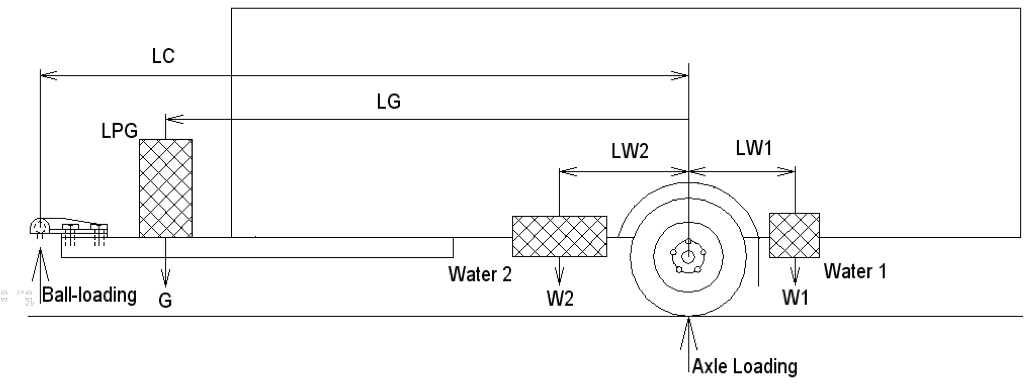If a third tank is fitted, add it to the drawing and measure the (+ or -) distance from the centre of the tank to the centre of the axle(s).
Calculate the “Moments” – Mass x Distance – around the centre of the axle (or midway between tandem axles):
Change in ball loading = ( (G x LG) + (W2 x LW2) – (W1 x LW1) ) / LC
Example: G = 18kg; W1 = 45kg; W2 = 90kg; LG = 3.0m; LW1 = 1.5m; LW2 = 1.5m; LC = 3.5m
Change in ball loading = ( (18 x 3) + (90 x 1.5) – (45 x 1.5) ) / 3.5
Change in ball loading = ( (54) + (135) – (67) ) / 3.5
Change in ball loading = ( 122 ) / 3.5
Change in ball loading = + 35kg
Worst Case 1: W1 empty; G & W2 full
Change in ball loading = + 54kg
Worst Case 2: W1 full; G & W2 empty
Change in ball loading = – 19kg
Caravans should be designed so that there is the least possible change in the ball loading when each tank is full or empty. Multiple water tanks should be positioned as close as possible to, and each side (front/rear) of the axle(s). The formula can also be used to calculate the change in ball loading when an appliance, or heavy article, is installed.
In part three, we talk about chassis and suspension design and ratings.














